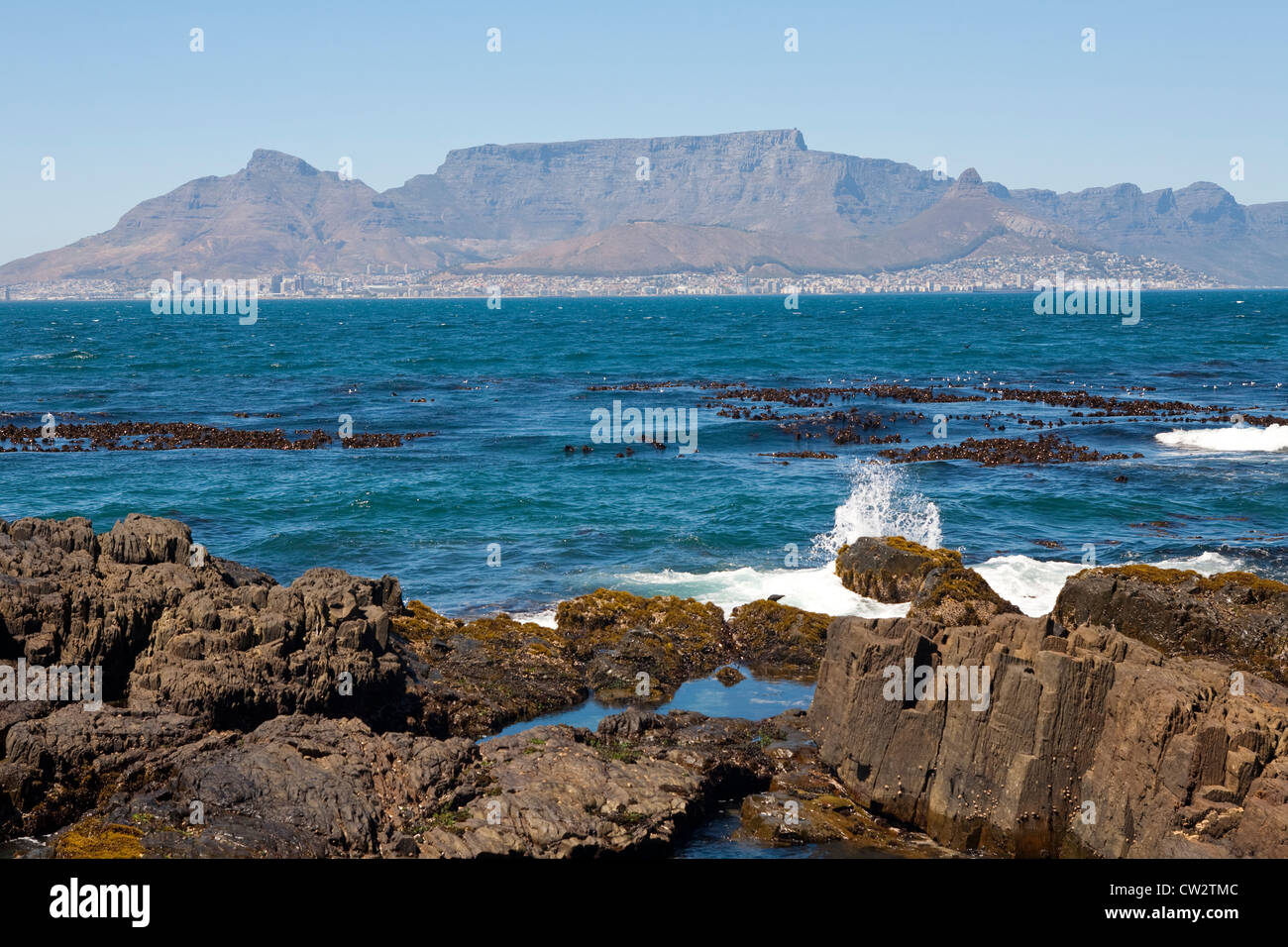Table Mountain in the distance from Robben Island, South Africa.

Image details
Contributor:
Jeff Gilbert / Alamy Stock PhotoImage ID:
CW2TMCFile size:
36.4 MB (2 MB Compressed download)Releases:
Model - no | Property - noDo I need a release?Dimensions:
4367 x 2911 px | 37 x 24.6 cm | 14.6 x 9.7 inches | 300dpiDate taken:
30 January 2010Location:
Robben Island, Table Bay, Cape Peninsula, Cape Town, South AfricaMore information:
Robben Island, Table Bay, prison grounds used for political prisoners during apartheid in South Africa. The name is Dutch for "seal island". Robben Island is roughly oval in shape, 3.3 km long north-south, and 1.9 km wide, with an area of 5.07 km². People lived on Robben Island many thousands of years ago, when the sea channel between the Island and the Cape mainland was not covered with water. Since the Dutch settled at the Cape in the mid-1600s, Robben Island has been used primarily as a prison. Indigenous African leaders, Muslim leaders from the East Indies, Dutch and British soldiers and civilians, women, and anti-apartheid activists, including South Africa's first democratic President, Nelson Rolihlahla Mandela and the founding leader of the Pan Africanist Congress, Robert Mangaliso Sobukwe, were all imprisoned on the Island. Robben Island has not only been used as a prison. It was a training and defence station in World War II (1939-1945) and a hospital for people with leprosy, and the mentally and chronically ill (1846-1931). In the 1840s, Robben Island was chosen for a hospital because it was regarded as both secure (isolating dangerous cases) and healthy (providing a good environment for cure). During this time, political and common-law prisoners were still kept on the Island. As there was no cure and little effective treatment available for leprosy, mental illness and other chronic illnesses in the 1800s, Robben Island was a kind of prison for the hospital patients too. Since 1997 it has been a museum and a heritage site. The museum is a dynamic institution, which acts as a focal point of South African heritage. It runs educational programmes for schools, youths and adults, facilitates tourism development, conducts ongoing research related to the Island and fulfils an archiving function.